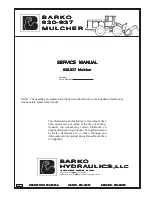
©
American DJ
®
- www.americandj.com - Tri Image™ Instruction Manual Page 12
©
American DJ
®
- www.americandj.com - Tri Image™ Instruction Manual Page 11
Figure 2
1 Ground
1 Ground
XLR Male Socket
XLR Pin Configuration
3 Hot
2 Cold
2 Cold
3 Hot
XLR Female Socket
Pin 3 = Data True (positive)
Pin 2 = Data Compliment (negative)
Pin 1 = Ground
Special Note: Line Termination.
When longer runs of cable are
used, you may need to use a terminator on the last unit to avoid erratic
behavior. A terminator is a 90-120 ohm 1/4 watt resistor which is con-
nected between pins 2 and 3 of a male XLR connector (DATA + and
DATA -). This unit is inserted in the female XLR socket of the last unit
in your daisy chain to terminate the line. Using a cable terminator (ADJ
part number Z-DMX/T) will decrease the possibilities of erratic behav-
ior.
DMX512 IN
3-PIN XLR
SOUND
REMOTE
CONTROL
INPUT
POWER
INPUT OUTPUT
SOUND
REMOTE
CONTROL
INPUT
POWER
INPUT OUTPUT
SOUND
REMOTE
CONTROL
INPUT
POWER
INPUT OUTPUT
DMX512
DMX+,DMX-,COMMON
1
2
3
Termination reduces signal errors and
avoids signal transmission problems
and interference. It is always advisable
to connect a DMX terminal, (Resistance
120 Ohm 1/4 W) between PIN 2 (DMX-)
and PIN 3 (DMX +) of the last fixture.
1
2
3
1
2
3
DMX +
DMX -
COMMON
DMX512 OUT
3-PIN XLR
Figure 3
5-Pin XLR DMX Connectors.
Some manufactures use 5-pin XLR
connectors for DATA transmission in place of 3-pin. 5-pin XLR fixtures
may be implemented in a 3-pin XLR DMX line. When inserting stan-
dard 5-pin XLR connectors in to a 3-pin line a cable adaptor must be
used, these adaptors are readily available at most electric stores. The
chart below details a proper cable conversion.
Conductor
5-Pin XLR Male (In)
3-Pin XLR Female (Out)
Pin 1
Pin 5 - Do Not Use
Pin 4 - Do Not Use
Pin 3
Pin 2
Pin 1
Pin 3
Pin 2
Not Used
Not Used
Data True (+ signal)
Data Compliment (- signal)
Ground/Shield
3-Pin XLR to 5-Pin XLR Conversion
Tri Image™
Set Up
CAUTION IMPORTANT! When installing this projector, make sure
that it is mounted in a manner that prevents the audience from
looking directly into the beam, and the beam from striking the
audience.
Power Supply:
This unit is available only in 120v. Before plugging
your unit in be sure the source voltage in your area matches the
required voltage for your American DJ
®
Tri Image.™
General Operation:
This fixture is designed to operate as a stand
alone, sound-active unit, or in a Master/Slave configuration. It can
also operate via DMX controller. The Tri Image™ is ready to be
plugged in out of the box. After plugging the power supply into a
power outlet the lasers will immediately begin to cycle through the
many built in patterns (provided all dipswitch are in the “OFF” posi-
tion, and there is an ample amount of sound to trigger the unit). You
can also flip dipswitch #10 to the “ON” poition to activate the Auto
Mode. The unit comes with several built-in patterns that automatically
cycle through when the unit is operating.
Sensitivity Knob:
A sound sensitivity knob is located on the rear
of the unit. Use this knob to regulate the amount of sound it takes to
trigger the unit. Turning the knob in a clockwise direction will increase
the units sensitivity to sound, turning the knob in a counterclock-
wise direction will decrease the units sensitivity. Turning the knob
completely to the counter-clockwise direction will turn off the sound-
active mode.
Tri Image™
Operation
Operating Modes:
Universal DMX Control:
This mode allows you to use a universal
DMX-512 controller such as the American DJ
®
DMX Operator™ or
Show Designer.™
1. To control your fixture in DMX mode, follow the set-up procedures
on pages 9-11 as well as the set-up procedures included with
your DMX controller.
2. For longer cable runs (more than a 100 feet) use a terminator on
the last fixture.
3. Assign a DMX address to the unit by following the dipswitch chart
on page 16.
4. The Tri Image™ uses two DMX channels. See page 15 for




























